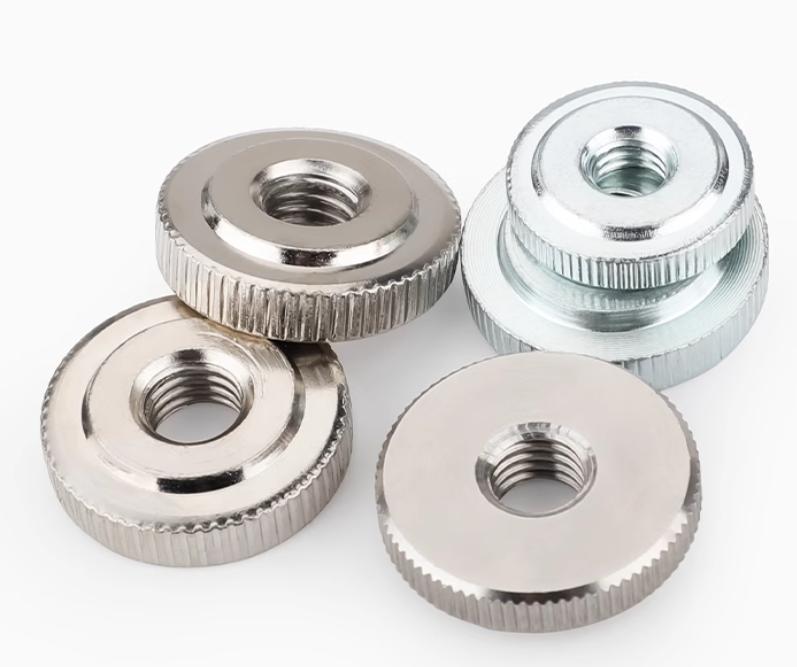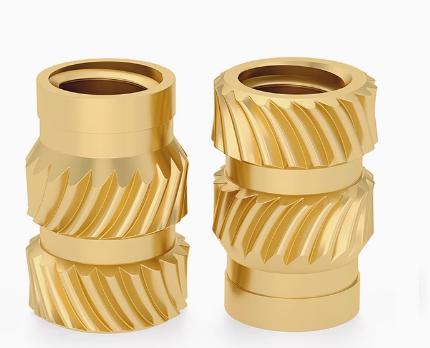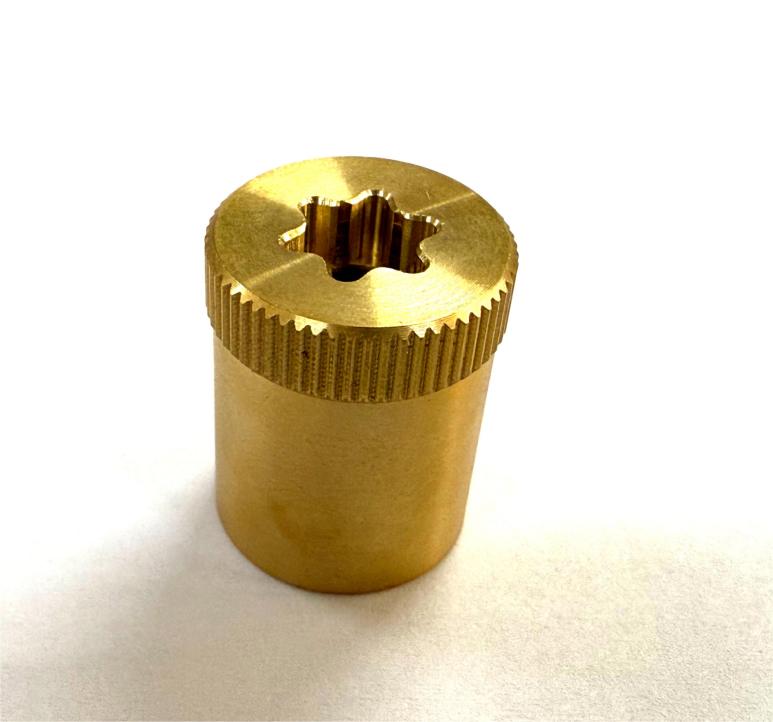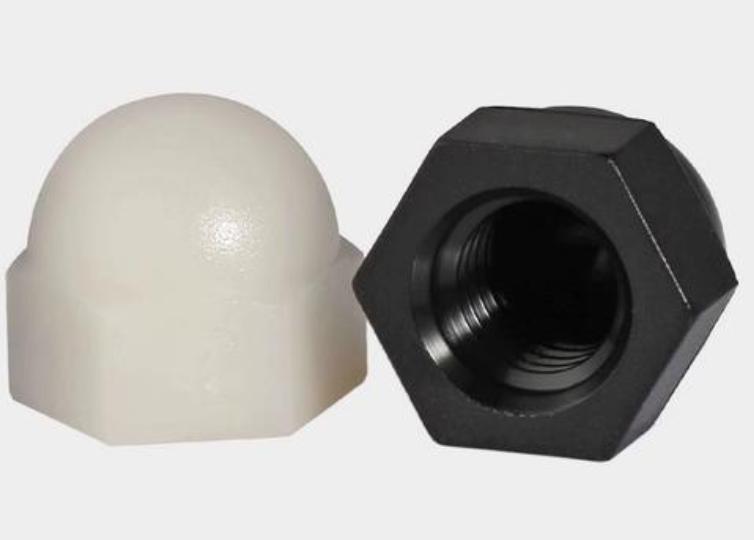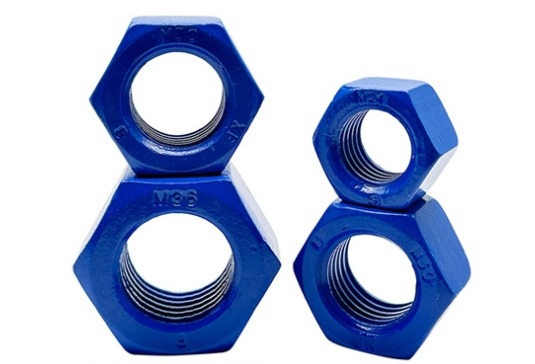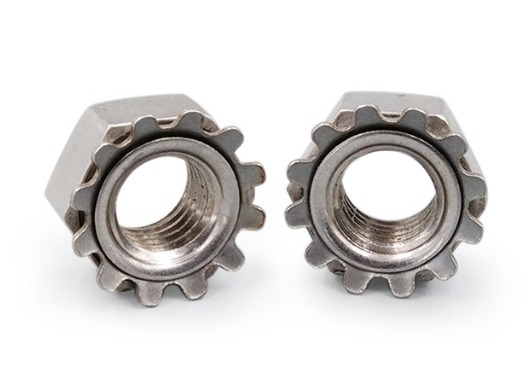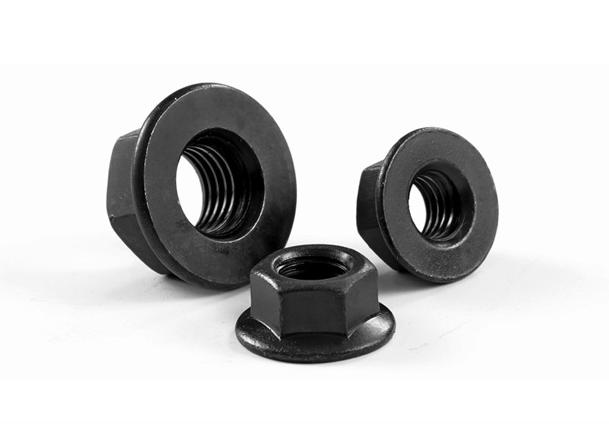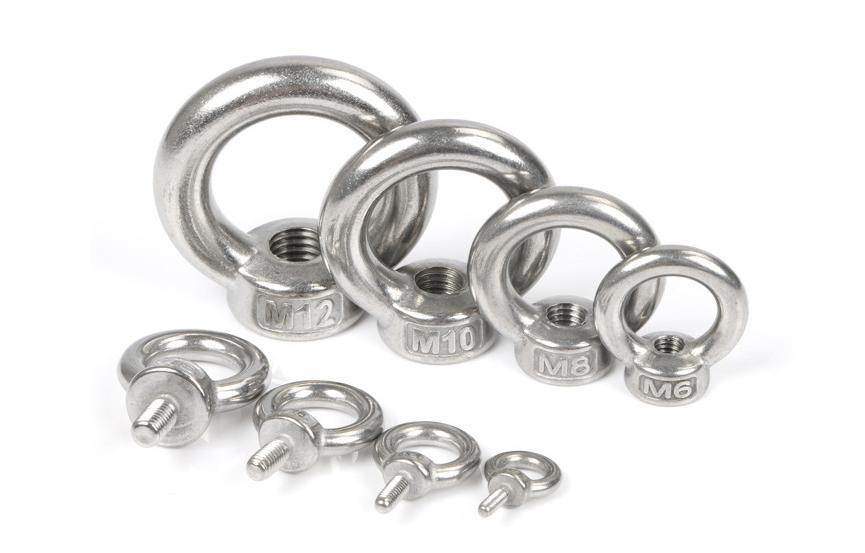What are the Different Types of Self-locking Nuts: Choosing the Right Type
Self-locking nuts are specialized fasteners designed to resist loosening under vibration, dynamic loads, or thermal changes. They achieve this through unique locking mechanisms that create additional friction or mechanical interference. The article explores the various types of self-locking nuts, their unique features, their applications across industries and the key consideration for choosing the right type.
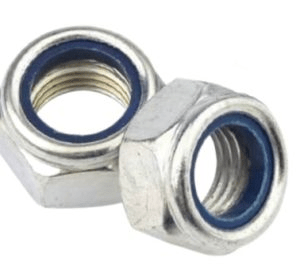
Table of Contents
What are Self-locking Nuts
Unlike standard nuts, which rely solely on tightening force for stability, self-locking nuts incorporate unique locking mechanisms to prevent loosening caused by vibrations, dynamic loads, or thermal changes. These nuts are essential in industries where safety, reliability, and durability are critical. Self-locking nuts achieve their resistance to loosening through one or more of the following mechanisms:
- Friction-Based Locking: Materials like nylon inserts create friction against the bolt threads, preventing movement.
- Mechanical Interference: Distorted or deformed threads grip the bolt tightly to avoid slippage.
- Integrated Features: Serrations, flanges, or washers enhance grip by increasing surface contact or resistance.
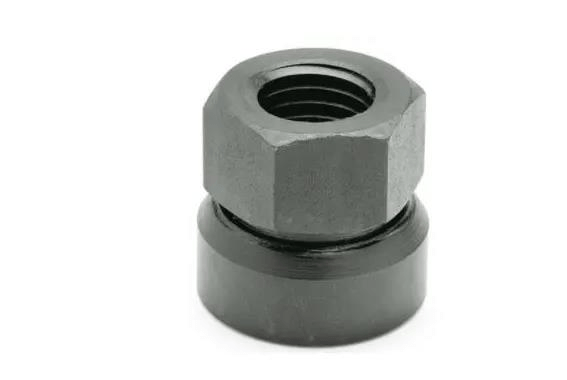
Advantages
- Prevents Loosening: Ensures stability in high-vibration or dynamic environments.
- Improves Safety: Reduces the risk of failures due to loosening.
- Reusable: Many self-locking nut types can be reused without compromising performance.
- Simplifies Assembly: Eliminates the need for additional locking devices like washers or adhesives.
Limitations
- Temperature Sensitivity: Nylon inserts may degrade in high-temperature applications.
- Cost: Can be more expensive than standard nuts.
- Limited Reuse: Certain lock nut types lose effectiveness after multiple uses.
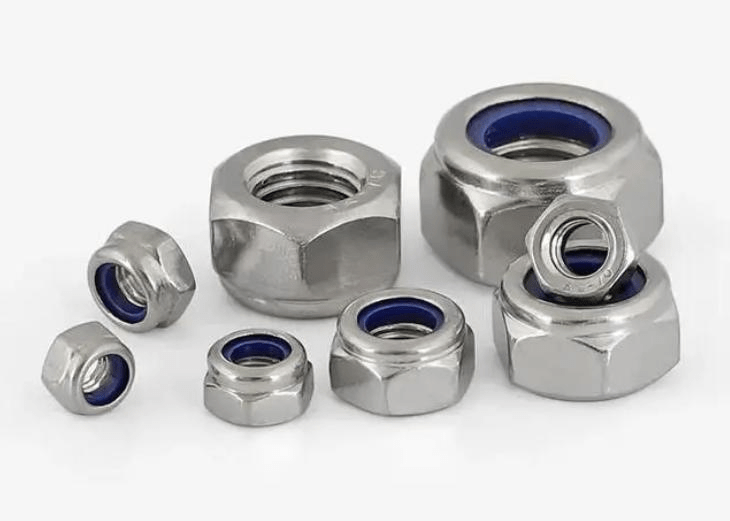
Various Types of Self-locking Nuts
1. Nylon Insert Lock Nuts
Nylon insert lock nuts, also known as Nylock nuts, are among the most common self-locking nuts. They feature a nylon collar inserted into one end of the nut. When tightened, the bolt threads deform the nylon, creating friction that prevents loosening.
Features:
- Reusable within certain torque limits
- Lightweight and cost-effective
Applications:
- Automotive assemblies
- Industrial machinery
- Household appliances
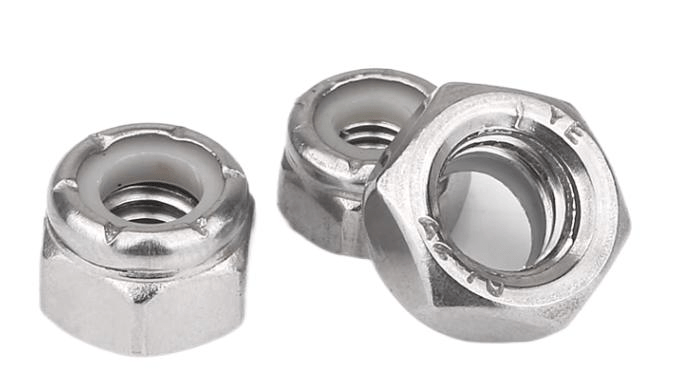
2. Metal Lock Nuts
Metal lock nuts rely on metal deformations or interference to create locking action. They are particularly suitable for high-temperature applications where nylon inserts may degrade.
Types:
- Prevailing Torque Lock Nuts: Designed with distorted threads to generate friction.
- Serrated Flange Nuts: Feature serrations on the flange that grip the mating surface.
Applications:
- Aerospace components
- Power generation equipment
- High-performance engines
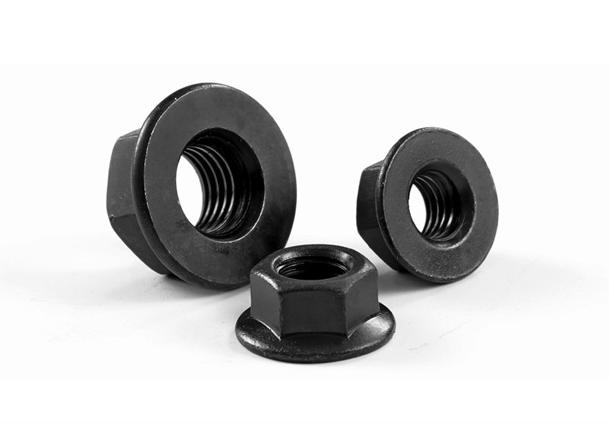
3. Castle Nuts (Slotted Nuts)
Castle nuts also known as slotted nuts, are characterized by slots on their top face that accommodate a cotter pin. The pin passes through a hole in the bolt and the slots, preventing rotation.
Features:
- Secure mechanical locking
- Suitable for dynamic loads
Applications:
- Automotive axles
- Heavy machinery
- Aircraft systems
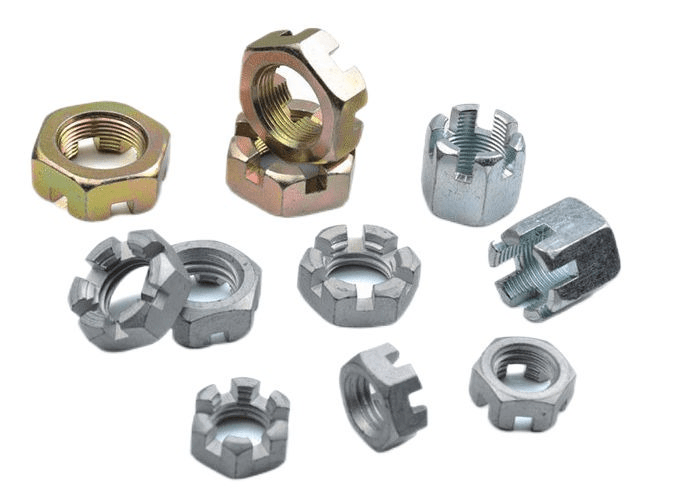
4. Keps Nuts (K-Lock Nuts)
Keps nuts, also called K-lock nuts, have an attached free-spinning washer with serrations. The washer grips the mating surface, preventing loosening due to vibration.
Features:
- Integrated washer for load distribution
- Simplified assembly process
Applications:
- Electronics
- Consumer appliances
- Light-duty industrial applications
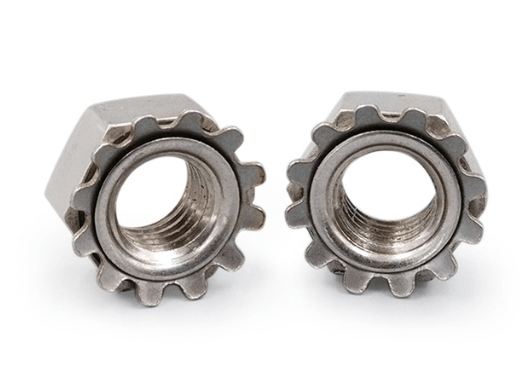
5. Elastic Stop Nuts
Elastic stop nuts incorporate an elastomer ring to generate friction when tightened. The elastomer material, such as rubber or polyurethane, ensures consistent locking action.
Features:
- Enhanced vibration resistance
- Protects against thread wear
Applications:
- Automotive suspensions
- Vibrating machinery
- Marine applications
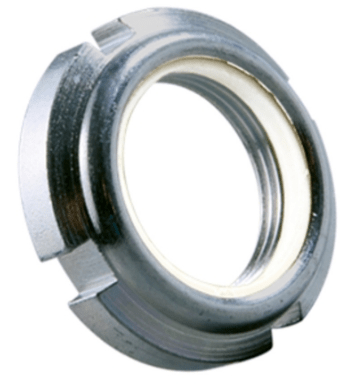
6. Two-Piece Lock Nuts
These nuts consist of a main nut body and a separate locking element. When tightened, the locking element presses against the bolt threads, providing resistance to loosening.
Features:
- Superior reusability
- High torque resistance
Applications:
- High-load equipment
- Construction machinery
- Wind turbines
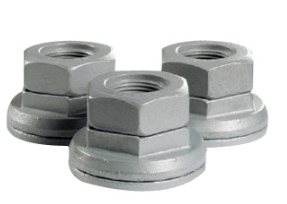
7. Distorted Thread Lock Nuts
Distorted thread lock nuts are designed with non-circular thread sections, such as elliptical or oval deformations. The deformation creates an interference fit with the bolt, ensuring a secure hold.
Features:
- All-metal construction for high temperatures
- Reliable under extreme conditions
Applications:
- Aerospace
- Defense systems
- Heavy-duty vehicles
8. Flange Lock Nuts
Flange lock nuts have a wide flange at the base that acts as an integrated washer. The flange can be smooth or serrated, with the latter offering enhanced locking by gripping the mating surface.
Features:
- Improved load distribution
- Serrations for vibration resistance
Applications:
- Automotive exhaust systems
- Agricultural equipment
- Structural assemblies
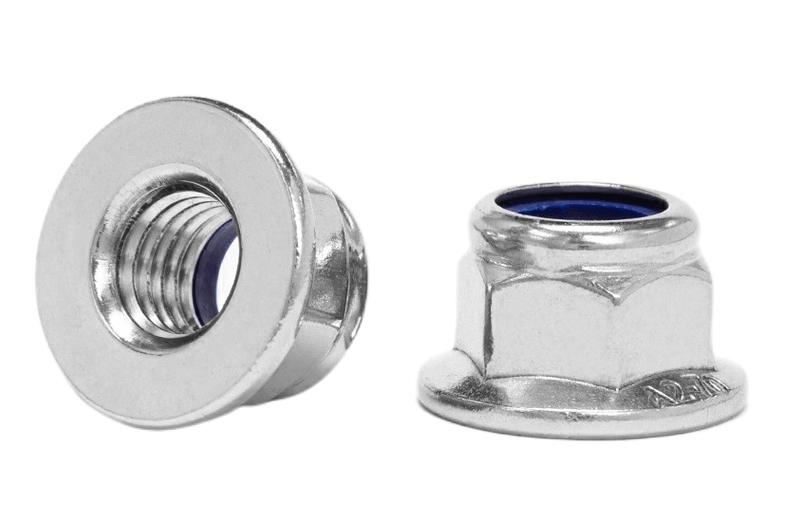
9. Wedge Lock Nuts
Wedge lock nuts use a pair of wedge-shaped washers that lock into each other as they are tightened. This creates a locking force stronger than the external forces attempting to loosen the nut.
Features:
- Highly effective under dynamic loads
- Suitable for reassembly
Applications:
- Railways
- Bridges
- Heavy construction
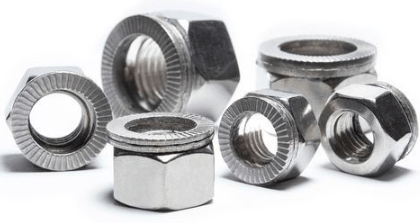
Key Factors to Consider for Choosing the Right Type of Self-locking Nuts
This chart can guide engineers and designers in selecting the most appropriate self-locking nut for their specific application needs.
| Factor | Description | Recommended Types |
| Vibration Resistance | The nut’s ability to stay secure under constant or high vibration. | Nylon Insert Nuts, Metal Lock Nuts, Wedge Lock Nuts |
| Temperature Range | The temperature the nut can withstand without losing effectiveness. | Metal Lock Nuts, Distorted Thread Nuts, Castle Nuts |
| Reusability | Whether the nut can be reused without significant performance degradation. | Nylon Insert Nuts, Wedge Lock Nuts, Elastic Stop Nuts |
| Load Capacity | The nut’s ability to handle high static or dynamic loads. | Distorted Thread Nuts, Castle Nuts, Flange Lock Nuts |
| Corrosion Resistance | The nut’s performance in corrosive environments, such as marine applications. | Elastic Stop Nuts, Stainless Steel Lock Nuts, Flange Lock Nuts |
| Ease of Installation | How simple it is to install and secure the nut. | Keps Nuts, Flange Lock Nuts, Nylon Insert Nuts |
| Material Compatibility | Suitability of the nut’s material with the bolt and the surrounding system. | Metal Lock Nuts, Elastic Stop Nuts, Castle Nuts |
| Cost | The economic feasibility of using a specific type of nut. | Nylon Insert Nuts, Keps Nuts, Flange Lock Nuts |
| Environmental Suitability | Performance in specific environments like underwater or extreme weather. | Wedge Lock Nuts, Castle Nuts, Elastic Stop Nuts |
| Dynamic Loads | Performance under fluctuating or shock loads. | Wedge Lock Nuts, Castle Nuts, Distorted Thread Nuts |
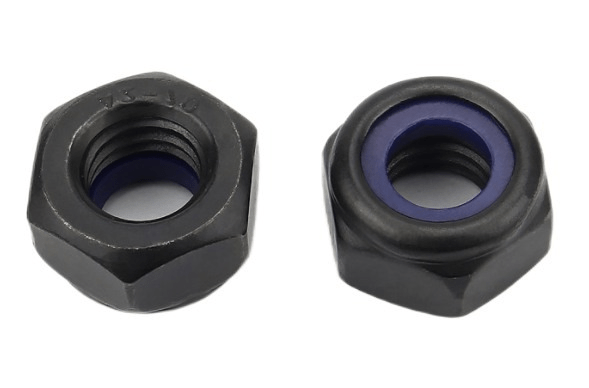
Summary
Each type of self-locking nut offers distinct advantages tailored to specific applications, from lightweight nylon inserts to robust metal lock nuts. Understanding the features and uses of self-locking nuts helps engineers select the most suitable option for their projects, ensuring safety, durability, and performance across industries.

